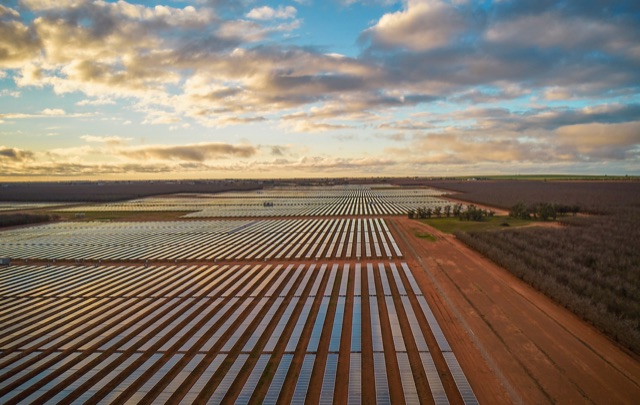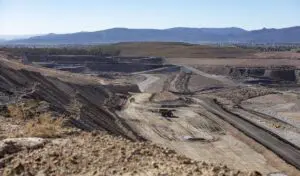It has taken a while, but it appears to have finally dawned on the federal Coalition government that low cost solar presents an unparalleled economic opportunity for Australia and deliver what it says will be the “world’s lowest cost clean electricity.”
As RenewEconomy reported last week, the Australian government is now aiming for a solar cost of $15/MWh, around one third off the current price, and has added solar as a new sixth key element in its newly updated technology roadmap.
It hardly needed to add in the word “clean” as a qualifier, because as the International Energy Agency recognises, solar is providing the cheapest electricity ever produced.
And it’s encouraging that the federal government now realises the massive resource it has at its disposal, and its importance in delivering other key technologies such as renewable hydrogen, low cost and green manufacturing and cutting emissions in the rest of the economy. If only it would adjust its targets accordingly.
Details of the $15/MWh target have been quietly released in the government’s latest edition of its Technology Roadmap, put together with the help of former chief scientist Alan Finkel, and a variety of experts including the chairs of AEMO, ARENA, and the CEFC, and the head of Macquarie Bank and others.
“Achieving $15 per MWh for solar electricity generation could help deliver the world’s lowest cost clean electricity, enabling Australian manufacturers and businesses to stay competitive and support the wider economy,” the document says.
“Solar electricity generation at $15 per MWh would fast-track Australia’s ability to meet the clean hydrogen stretch goal of production under $2 per kg, and increase our competitiveness in hydrogen export markets.
“It would also support cost-competitive production of low emissions steel and aluminium, and direct air capture of CO₂ (an emerging technology).”
The document talks of a two-pronged approach to achieving what it describes as a 30-30-30 target – achieving 30 per cent module efficiency and a cost of 30 cents per installed watt by 2030.
The first prong is continuing Australia’s excellent record in solar cell technology, and it looks like ARENA, which was instrumental in lowering the cost of large scale solar in its early years by supporting the first big solar farms, will play a key role here.
And it is also looking to support large deployments of solar, recognising that scale is the key to efficiencies and cost reductions.
“Annual solar irradiation in Australia is the highest per square metre in the world, and we have significant land-mass suitable for large-scale solar developments, and proximity to large and growing markets,” it notes.
It doesn’t mention any projects in particular, but thoughts immediately turn to the Sun Cable project, which at up to 20GW would be by far the largest in the world, and has the backing of billionaires Mike Cannon-Brookes and Andrew Forrest.
Other massive solar projects have also been proposed, including the 50GW Western hydrogen hub, and the 26GW Asia Renewable Energy Hub in the Pilbara, both proposed by CWP Global and Intercontinental, and both combining solar and wind.
Forrest, who has his own ambitions for hundreds of gigawatts of renewables powering renewable hydrogen production, also has hopes of building a 1GW solar module manufacturing plant in Queensland, although his choice of thin film solar over mono-crystalline technology has surprised some.
Interestingly, the government’s technology roadmap makes this observation about those two energy sources: “Achievement of this stretch goal would see reductions in the cost of solar outpace reductions in wind energy, enhancing a source of Australian comparative advantage.”
The document recognises that getting high penetration of “ultra low-cost solar electricity” in the grid will also require the successful implementation of other priority technologies, infrastructure and market reforms, including energy storage, the digital grid and recognition of the importance of dispatchable capacity.
It insists, however, that “Australia’s existing thermal generation fleet will continue an essential role in meeting customer and grid firming needs.” Many would disagree with that.
The push for ultra-low cost solar, however, will need something else – a low cost of capital. And right now, the big investors in renewables say that capital costs are higher than they should be because of the uncertainty of government policy and market rules, and the lack of any clear mandates and targets.
Cannon-Brookes, in an interview in last week’s episode of the Energy Insiders podcast, attracting investment needs some clarity. The greater the perceived risk, the higher the cost of capital.
“It’s having stable policy, having clear milestones and targets and plans, (it) enables everybody to invest capital against those opportunities, and to plan for those transitions. And again, we don’t have more stability to bet on as a business,” Cannon-Brookes said.
“Finance is what we need to take the current technologies and roll them out at much more rapid scale. It’s actually way more important to get the finance equation correct than the technology equation, especially if we think about inventing new technologies, right?
“If you took the price of solar straight line to the reductions you’re going to get over the next 20 years, you’d probably be pretty damn close, regardless of spending $1 of government money on technology R&D.
“But if you can finance it, bring the costs of deployment down, that is the thing that will help us roll it out faster. We need to switch the fundamental capex/ opex equation of renewables or pretty much any of this technology.
“And that doesn’t matter whether it’s household or business or manufacturing or grid level, financing this stuff correctly, and getting a cost of capital in the right places will be what leads into them getting us the benefits from those things.”










